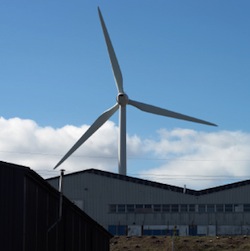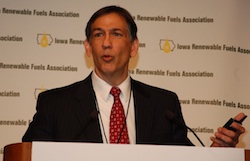Albion Community Power (ACP) has invested £1.5m in partnership with Welsh developer Infinite Renewables to fund the development of a 500kw single wind turbine in Blaencilgoed, in South Wales. The wind turbine, which is the first investment made by ACP, will supply electricity to a local quarry. It is expected to begin producing power in September 2014 and is estimated to generate over 1,700,000 kWh of electricity per year.
 ACP says it aims to be a major producer of community scale renewable energy by raising up to £100 million in due course to power some 35,000 homes, targeting sites where power can be sold to the community at a discount of up to 50 percent. The ACP team will invest in a range of renewable energy projects using proven technologies including brownfield wind, solar, hydroelectricity, biogas and biomass.
ACP says it aims to be a major producer of community scale renewable energy by raising up to £100 million in due course to power some 35,000 homes, targeting sites where power can be sold to the community at a discount of up to 50 percent. The ACP team will invest in a range of renewable energy projects using proven technologies including brownfield wind, solar, hydroelectricity, biogas and biomass.
Volker Beckers, Chairman of ACP said, “The energy industry is changing, and smaller scale schemes will be playing an increasingly important role. We are excited by our first investment and are looking forward to backing other new projects in the coming months.”
ACP’s projects will qualify for government subsidies such as Feed in tariffs (FiTs). As FiTs are RPI-linked, the company says investors stand to benefit from protection against inflation. To date, Albion has made 10 investments that are currently achieving an investment return of 11%.
“We have an existing partnership with Albion Ventures, having built a number of turbines together starting with a single mast, 500kW Wind Turbine on a brownfield site near Ebbw Vale in Wales,” said Will David, Infinite Renewables. “We are excited to be partnering ACP on this new project, which plays to our collective strengths. We look forward to developing many more sites with ACP going forward.”









